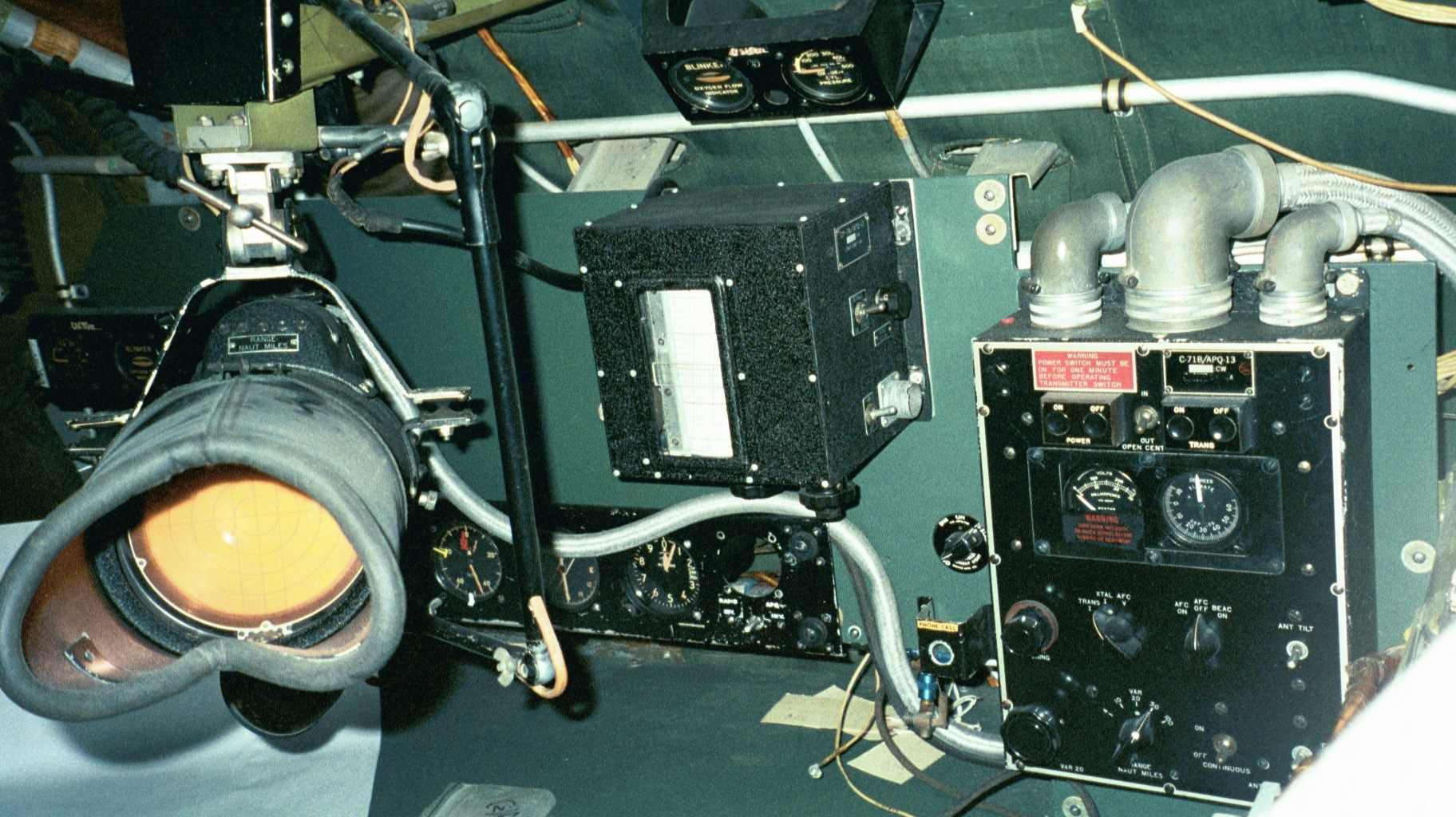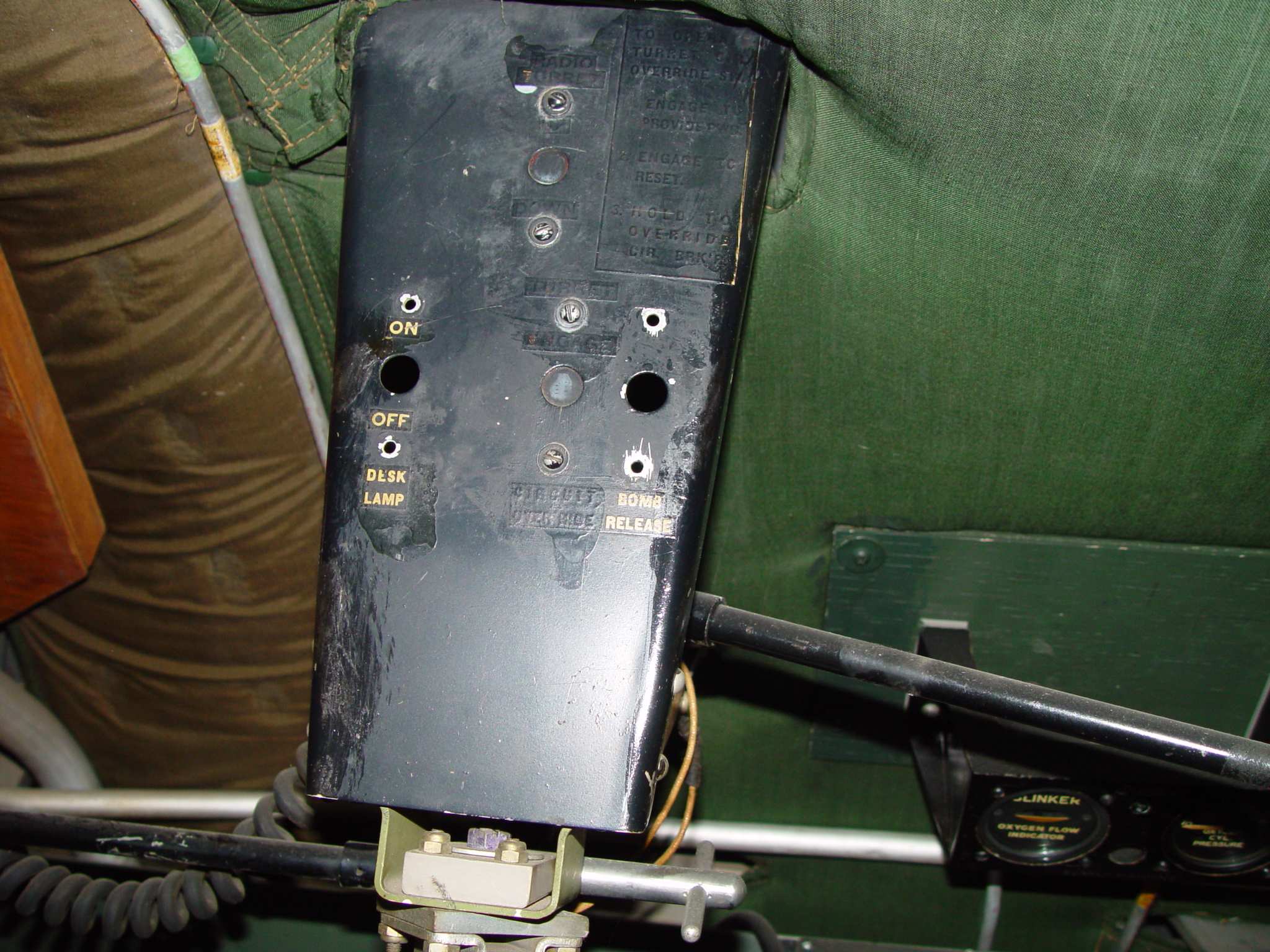Radar Operator's Position
 Radar Operator's position
Radar Operator's position
Sharing the rear pressurized compartment with the Countermeasures Officer (and in a curtained off section, two observers at waist positions normally used
for gun aimers in a normal B-29) was the Radar Operator and his APQ-13 radar. Under the floor was also installed an AN/APQ-5
radar bombing system that connected the bomb release system to the radar operator when the bombardier transferred control to him. The two chairs were not
installed at the time of the Hiroshima mission. The second was added after the war to accommodate the countermeasures officer, who originally had to sit on a pad
on the floor (or more often on the commode, unseen to the right in the photo.)
 Radar Operator's position in rear compartment. (I have since installed the APQ-13 inverter voltmeter in the empty hole in the nav panel.)
Radar Operator's position in rear compartment. (I have since installed the APQ-13 inverter voltmeter in the empty hole in the nav panel.)
 Bomb release panel in the vertical support above the radar scope. The switches have been installed (the bomb release switch has a green safety
cover over it in the top photo.) Notice the painted out original functions left over from the original B-29 assembly in Witchita. Many of these changes
were made at a modification center after the aircraft was accepted for "normal" service in the Pacific. Redirection into the "Silverplate" atomic mission
required an enormous number of these changes, incloding removal of all the defensive weaponry except the tail gun.
Bomb release panel in the vertical support above the radar scope. The switches have been installed (the bomb release switch has a green safety
cover over it in the top photo.) Notice the painted out original functions left over from the original B-29 assembly in Witchita. Many of these changes
were made at a modification center after the aircraft was accepted for "normal" service in the Pacific. Redirection into the "Silverplate" atomic mission
required an enormous number of these changes, incloding removal of all the defensive weaponry except the tail gun.
 Junction box below the radar desk. The desk had to be fabricated at the NASM Garber Restoration facility. The original had been replaced
by an APQ-23 desk after the war. Fortunately, an extensive Boeing drawing set was obtained with the Enola Gay to facilitate such restoration.
Junction box below the radar desk. The desk had to be fabricated at the NASM Garber Restoration facility. The original had been replaced
by an APQ-23 desk after the war. Fortunately, an extensive Boeing drawing set was obtained with the Enola Gay to facilitate such restoration.



